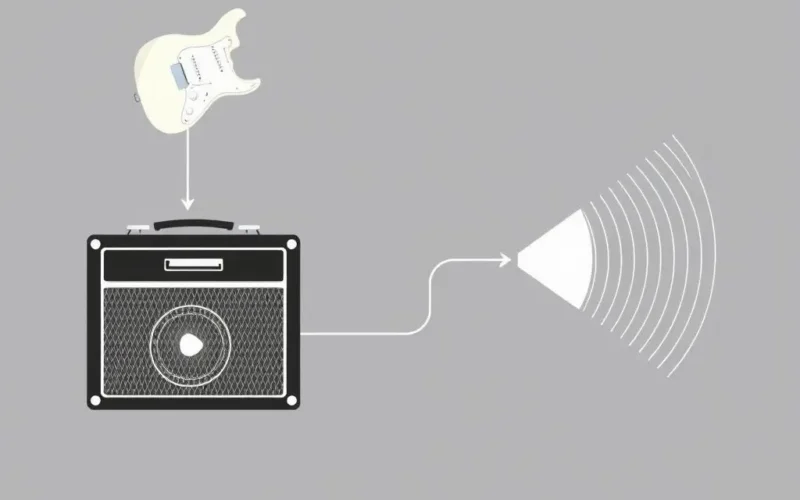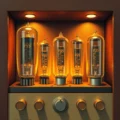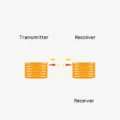Plug your electric guitar into an amp, strum a chord, and *boom* – a wave of sound washes over you. It feels like magic, doesn’t it? That tiny electrical whisper from your guitar’s pickups transforms into a powerful, room-filling roar. But it’s not magic – it’s a fascinating interplay of physics at work, far more intricate and surprising than just turning up the volume dial.
We’re talking about the hidden dance of electricity, magnetism, and pure mechanical force that takes a weak signal and gives it the muscle and character to move air and stir souls. It’s audio engineering distilled into an art form.
Let’s peel back the metal grille and venture inside to discover the scientific wizardry that happens from the moment your pick hits the string to the instant you hear that killer riff.
Table of Contents
The Spark: From String Vibration to Electrical Pulse
Before the amp even gets involved, the guitar itself performs a bit of physics magic. When you pluck a string, it vibrates. If your guitar has magnetic pickups (the most common type on electrics), these pickups contain magnets wrapped in coils of wire. The vibrating metal string, disturbing the magnetic field around the coil, induces a small electrical voltage within the wire. This voltage is an analog representation of the string’s vibration – a tiny, fluctuating electrical signal.
Think of it as a delicate electrical sketch of the sound you want to create. This signal is incredibly weak, often measured in millivolts. Sending this directly to a speaker would produce only a faint, almost inaudible peep. It needs a significant boost.
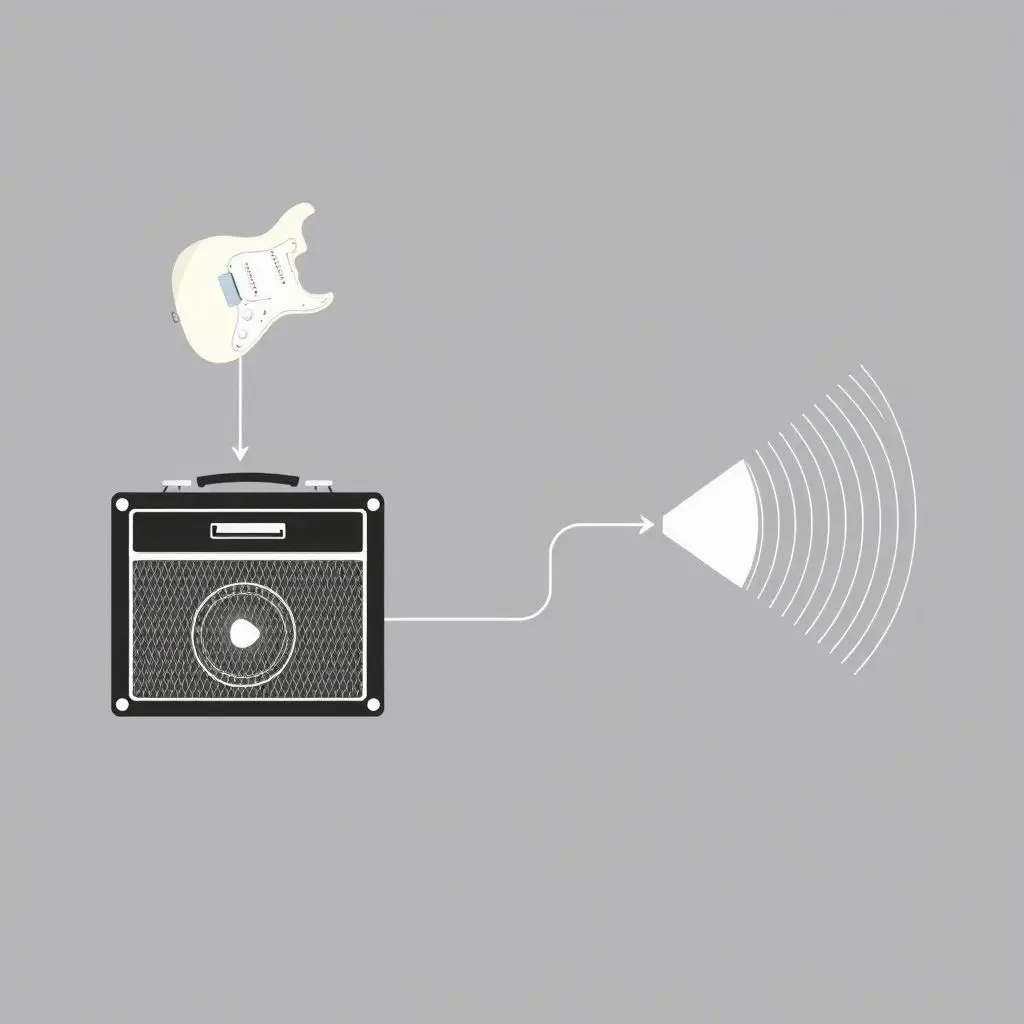
The Engine Room: Amplification – Where Weak Becomes Mighty
This is where the heart of the amplifier does its work. The primary job is to take that tiny electrical signal from the guitar and make it much, much stronger – increasing its voltage and current significantly. There are two main technologies that achieve this amplification, each with its own unique physical properties and resulting sonic characteristics:
Vacuum Tubes: The Classic Glow
For decades, vacuum tubes were the only way to amplify electronic signals, and they remain highly prized by many guitarists for their distinctive warm tone and natural compression and distortion characteristics. A typical audio vacuum tube, like a 12AX7 (common in preamps) or an EL34 (common in power amps), is essentially a glass envelope from which air has been evacuated.
Inside, you’ll find several key elements:
- Cathode: Heated by a filament, this element releases a stream of electrons (thermionic emission).
- Plate (Anode): A positively charged metal plate that attracts the electrons flowing from the cathode. A high voltage is applied here.
- Grid(s): Placed between the cathode and plate, these are wire meshes. The crucial one for amplification is the ‘control grid’. The tiny electrical signal from the guitar is applied to this grid.
The magic happens at the control grid. A small change in the voltage of the grid has a large effect on the flow of electrons from the cathode to the plate. A slightly negative voltage on the grid repels electrons, reducing the current flow. A slightly less negative (or more positive) voltage allows more electrons through, increasing the current flow. By feeding the guitar signal to the grid, the tube uses the high voltage supply between the cathode and plate to create a much larger, fluctuating current that mirrors the shape of the input signal, but on a grander scale. This is amplification.
Tubes aren’t perfectly linear devices. When pushed hard, they introduce harmonic distortion – adding overtones that weren’t in the original signal, particularly even-order harmonics which many find pleasing and musical. They also tend to compress the signal softly as they approach their limits, leading to that sought-after ‘tube breakup’ or ‘overdrive’. This non-linear behavior is a key part of the ‘tube tone’.
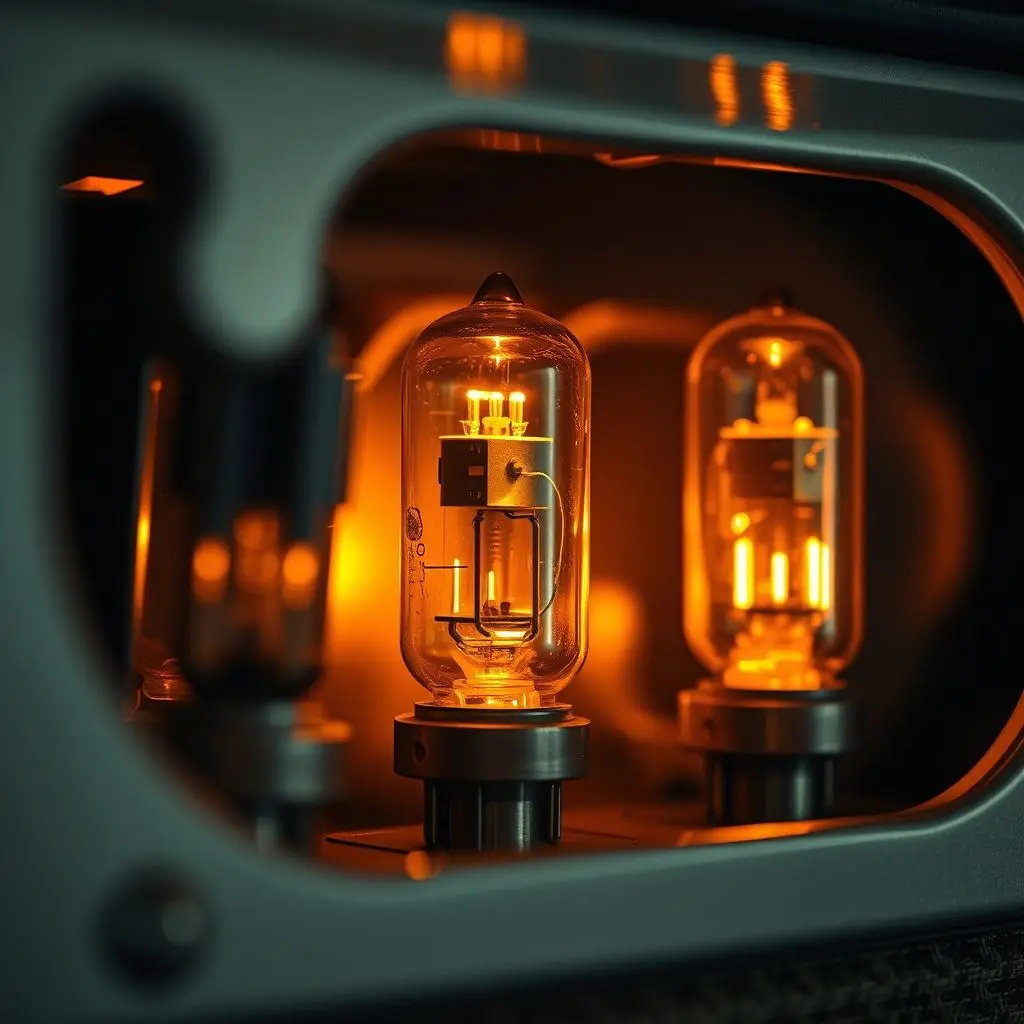
Solid-State Transistors: The Modern Workhorses
Solid-state amplifiers use transistors (like bipolar junction transistors – BJTs, or field-effect transistors – FETs) to amplify the signal. These are tiny semiconductor devices, usually made from silicon.
In simple terms, a transistor acts like an electrically controlled switch or valve. A small current or voltage applied to one part of the transistor (the ‘base’ or ‘gate’) controls a much larger current flowing through another part (the ‘collector-emitter’ or ‘drain-source’). Just like the grid in a tube, the input signal from the guitar modulates this control element, causing a much larger current from the power supply to flow in a way that mirrors the input signal.
Solid-state designs can be much more compact, reliable, and typically produce a ‘cleaner’ sound because they are often designed to be more linear than tubes. While solid-state distortion can be produced, its character is often different from tube distortion, sometimes described as less harmonically rich or less dynamic, although modern designs have made significant strides in mimicking tube behavior.
The Two Stages: Preamp and Power Amp
Most guitar amps actually have two main amplification stages:
- The Preamp: This stage takes the *very* weak signal from the guitar and boosts its voltage to a usable level. This is also where a significant amount of tone shaping happens through EQ (bass, middle, treble controls) and often where the first stages of overdrive or distortion are generated, especially in tube amps when the preamp tubes are pushed hard.
- The Power Amp: This stage takes the voltage-boosted signal from the preamp and significantly increases its *current*. This high-current signal is necessary to drive the speaker, which requires a substantial amount of electrical power to move its cone effectively.
Both stages are crucial. The preamp shapes the character and sensitivity, while the power amp provides the muscle to make that character heard loudly.
Feeding the Beast: The Power Supply
None of this amplification is possible without a robust power supply. Amplifiers don’t create energy out of thin air; they use the incoming electrical signal to *control* the flow of much larger amounts of electrical energy drawn from the wall (or batteries). The power supply converts the AC wall voltage into the various DC voltages (often quite high, especially for tube amps) that the amplifier circuits need to operate.
The Voice: Making Noise with the Speaker
The final link in the chain is the speaker, a transducer that converts the powerful electrical signal from the power amp back into physical sound waves you can hear. It’s another marvel of physics, combining electricity and magnetism to create mechanical movement.
The key components of a speaker are:
- Permanent Magnet: A strong, stationary magnet.
- Voice Coil: A coil of wire attached to the speaker cone, suspended in the magnetic field of the permanent magnet.
- Cone: Typically made of paper, plastic, or metal, this is the surface that moves to push air.
- Suspension (Surround and Spider): Flexible material that allows the cone and voice coil to move back and forth while keeping them centered.
Here’s how it works: The amplified electrical signal from the power amp is fed into the voice coil. As current flows through the coil, it generates its own temporary magnetic field. This magnetic field interacts with the strong, static magnetic field of the permanent magnet. Depending on the direction of the current flow in the voice coil (which alternates according to the shape of the audio signal), the voice coil will either be repelled by or attracted to the permanent magnet. Since the voice coil is attached to the cone, this pushes the cone outwards or pulls it inwards.
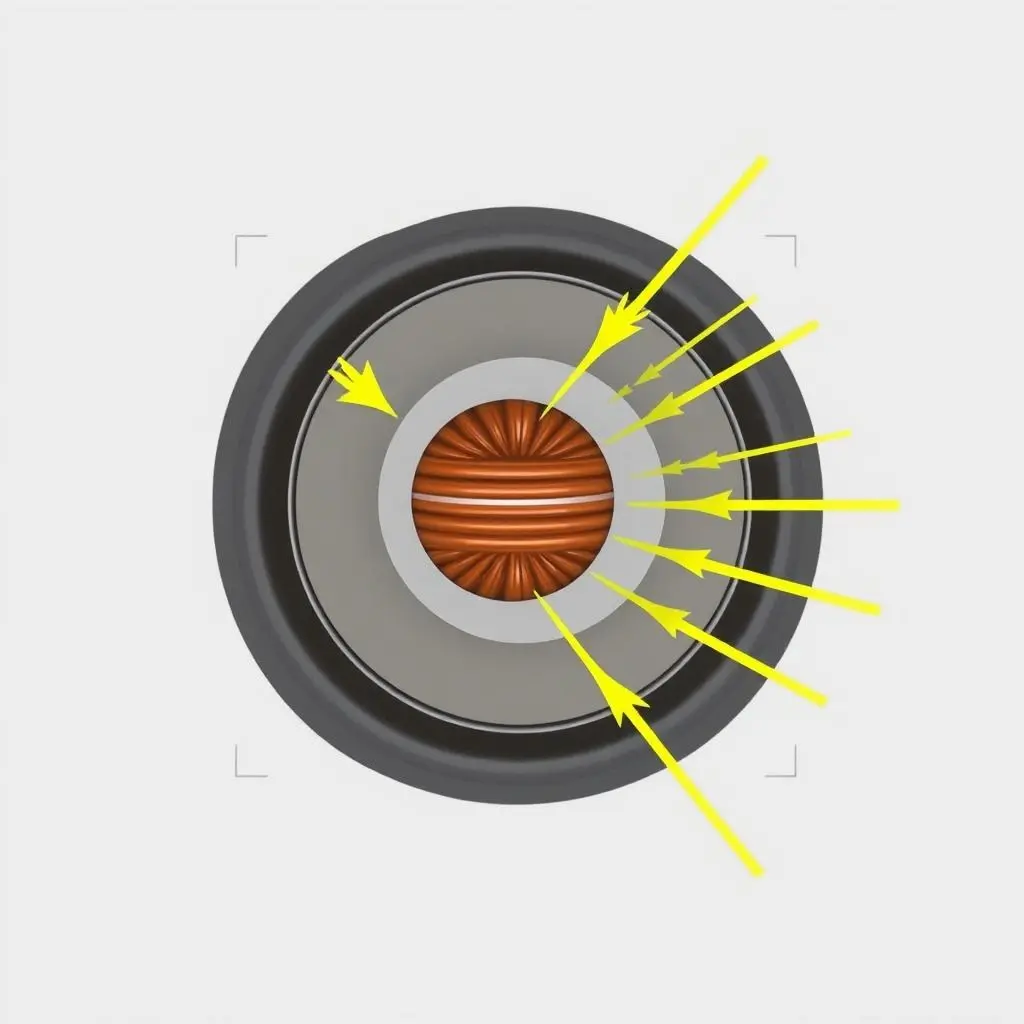
As the electrical signal continuously fluctuates, the voice coil and cone move back and forth rapidly, precisely mirroring the waveform of the amplified electrical signal. This movement of the cone pushes and pulls the surrounding air, creating areas of higher and lower pressure – sound waves – that travel to your ears.
Sculpting the Sound: Tone and the Dance of Physics
The physics doesn’t just make the sound loud; it profoundly shapes the tone. The specific types of tubes or transistors used, how they are biased and pushed, the design of the power supply, the size and material of the speaker cone, the magnet’s strength, the speaker cabinet’s construction – all these physical factors influence the final sound.
- Tube vs. Solid-State: Their different non-linearities and harmonic responses create distinct tonal palettes, especially when overdriven.
- Speaker Properties: Speaker size (10-inch, 12-inch, etc.), cone material, and magnet type affect frequency response, efficiency, and how they respond to transients. A bigger cone moves more air, often providing more bass.
- Cabinet Design: Open-back, closed-back, or ported cabinets affect bass response, dispersion, and resonance.
The complex interaction between the electrical circuit and the mechanical/magnetic speaker system is where much of the ‘magic’ of tone lies. It’s not just amplification; it’s character development through physics.
Quick Dip: Watch the Physics in Action!
Want a snappy, visually engaging summary of this physics party? Check out our YouTube Shorts that covers the core concepts discussed here:
(Note: Please replace [YOUR_SHORT_VIDEO_ID_HERE] in the iframe src with the actual YouTube Short video ID provided.)
The Physics Party Continues
So, the next time you plug in and crank up, take a moment to appreciate the incredible engineering and fundamental physics happening inside that box. The delicate dance between electricity flowing through circuits, creating magnetic fields, and translating those fields into physical motion to push air is truly remarkable. It’s the reason a simple strum becomes a sonic statement. Physics doesn’t just structure the sound; in a guitar amp, it makes the music sing!

Frequently Asked Questions (FAQs)
Q1: Do solid-state amps use speakers differently than tube amps?
A1: The speaker’s basic function – converting electrical current into physical movement using a voice coil and magnet – is the same regardless of whether a tube or solid-state amplifier drives it. However, the *characteristics* of the electrical signal (voltage, current, distortion profile, damping factor) produced by tube and solid-state power amps are different, which can subtly affect how the speaker behaves and sounds.
Q2: What is ‘headroom’ in an amplifier?
A2: Headroom refers to the amount of signal level an amplifier can handle before it starts to distort significantly. Amps with high headroom can stay clean at loud volumes, while amps with less headroom will start to break up or distort at lower volumes. This is determined by the design and the power supply voltage – higher voltage often means more headroom.
Q3: Why do tube amps need maintenance like replacing tubes?
A3: Vacuum tubes are physical components that wear out over time. The filament that heats the cathode can burn out, and the cathode itself can lose its ability to emit electrons efficiently. As tubes age, their performance degrades, affecting tone and power output, hence the need for replacement.
Q4: Does speaker cabinet construction really matter for tone?
A4: Absolutely! The cabinet is not just a box; it’s an integral part of the speaker system. Its size, material, bracing, and whether it’s open or closed back significantly influence how sound waves are reinforced or cancelled, affecting frequency response (especially bass), projection, and resonance.
Exploring the physics of your guitar amp reveals a world of ingenious design, where fundamental scientific principles are harnessed to create the sounds that define music. It’s a testament to the fact that sometimes, the deepest understanding enhances the appreciation.
